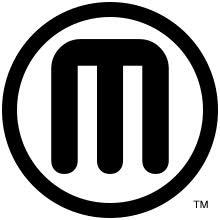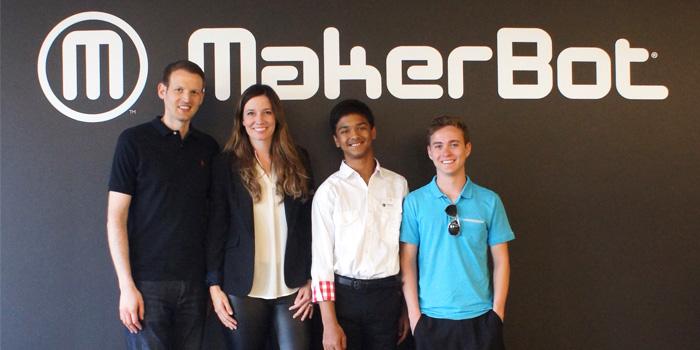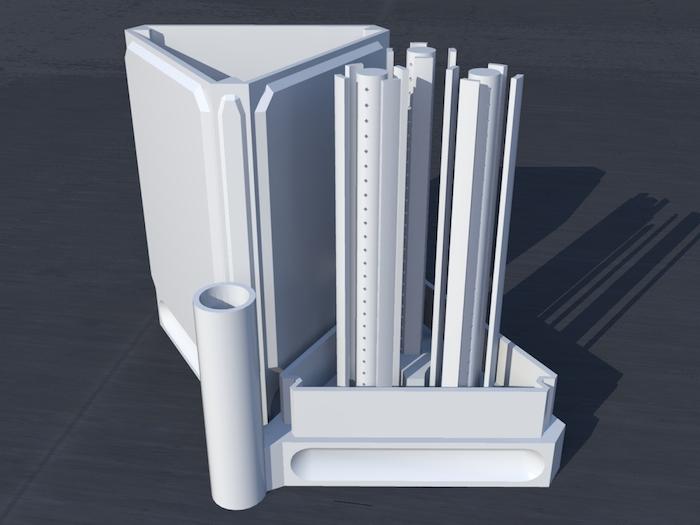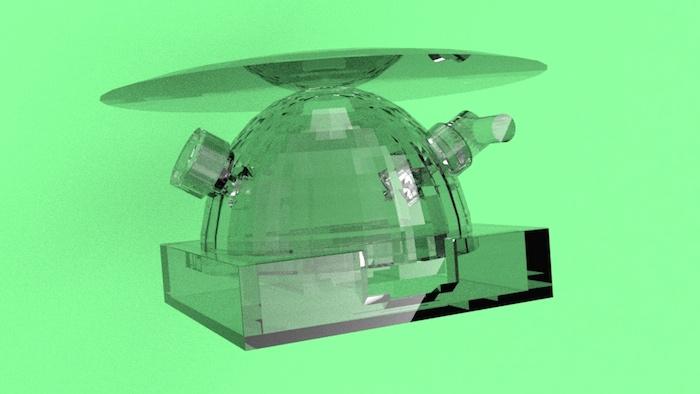 Even the most moderate of Trekkies love an excuse to bring up the fascinating world of Star Trek, a place where you can lose yourself in the fantasy of the future, and the delight of the high-tech. It’s probably very safe to say that although the original show ended in 1969, someone is probably talking about it somewhere right now, as you read this. They might be quoting Spock or striking a handsome Kirk-like pose, but in the 3D printing industry what we are usually alluding to is the power of technology to make things that seem to appear like magic before our eyes. Head over to the Replicator—and let’s eat in space!
Even the most moderate of Trekkies love an excuse to bring up the fascinating world of Star Trek, a place where you can lose yourself in the fantasy of the future, and the delight of the high-tech. It’s probably very safe to say that although the original show ended in 1969, someone is probably talking about it somewhere right now, as you read this. They might be quoting Spock or striking a handsome Kirk-like pose, but in the 3D printing industry what we are usually alluding to is the power of technology to make things that seem to appear like magic before our eyes. Head over to the Replicator—and let’s eat in space!
And as we reported back in April, that idea was related to a new contest theme as MakerBot, the Future Engineers for the ASME Foundation, NASA, and the Star Trek franchise all teamed up to offer the Star Trek Replicator Challenge. The idea was not to create a food itself, but to offer up ideas steeped in self-sustainability, allowing astronauts to make and consume their own space food using innovative methods.
Out of a whopping 400 entries, the winners were announced in June, as Kyle Corrette, a student at Desert Vista High School in Phoenix, Arizona, won in the Teen category with his Melanized Fungarium device, and Sreyash Sola, a student at Eagle Ridge Middle School in Ashburn, Virginia, designed an Astro Mini Farm for the production of food on Mars—winning for the Junior group.
Although they each received a MakerBot Replicator Mini Compact 3D Printer for their school and a PancakeBot pancake printer for home, it must have been pretty exciting to realize they would be going to New York as well, to see the Space Shuttle Enterprise at the Intrepid Sea, Air, & Space Museum, and tour MakerBot’s headquarters in Brooklyn.
Once at MakerBot, the two young students were able to meet with key leadership figures, as well as senior engineers. Given exactly the VIP treatment that amazing innovators deserve, both Kyle and Sreyash were given a glimpse of each team in each department at MakerBot as they met with them, along with having the privilege and inspiration of sit-downs with both CEO Jonathan Jaglom and Mechanical Engineer Michael Pappas.
“Having the opportunity to meet and be taken seriously by so many highly accomplished individuals gave me a new enthusiasm for the engineering field,” said Kyle.“This challenge has inspired me to learn new skills like CAD, and has also opened up future opportunities through the gift of a 3D printer to my school.”
One can only imagine the overwhelming excitement that both Kyle and Sreyash must have felt during this trip, not to imagine the motivation afterward, upon feeling the rewards of their success and seeing industry role models at their offices in visiting MakerBot. Following this challenge from beginning to end is a great way to see exactly how positive a challenge like this is. And according to Deanne Bell, founder of Future Engineers, the challenge was indeed a great success, pointing them toward futures in STEM-related fields.
“Advances in 3D printing technology are the collective result of pioneers across all disciplines — from Star Trek script writers to astronauts to engineers — who have taught us that science fiction is just a step away from science fact,” said Bell. “The future is bright with students like Kyle and Sreyash leading the way as our next generation of pioneers. I can’t wait to see what they innovate next.”
We’ll see if they can beat these first designs, which are amazing not ‘just for their age’ but on any level:
Kyle created the Melanized Fungarium. This allows astronauts to harness ionizing radiation (X-rays, gamma rays) which are common in space, allowing for fungus to grow—namely, a renewable edible fungus that provides an ongoing source of food astronauts. The fungarium, made with a 3D printed, waterproof plastic shell, is meant to be sustained in a low-gravity environment, even features an internal irrigation system.
Sreyash created an Astro Mini Farm. Meant to offer a compact design for growing, the mini-farm is a 3D printed domelike structure that does best in low-light, meant for thin-atmosphere agriculture. Sunlight is directed in through a convex lens, and both a basic pump and valve system offer the appropriate air pressure.
It’s one thing to be inspired by these winning creations, but even more exciting to visualize astronauts using both the fungarium and the farm as far away as Mars. These designs were chosen as the winners after great deliberation, and with that in mind—it’s very possible that they may be used in space. Discuss further in the 3D Printing Challenge Winners Visit MakerBot forum over at 3DPB.com.
[Source / Images: MakerBot]Subscribe to Our Email Newsletter
Stay up-to-date on all the latest news from the 3D printing industry and receive information and offers from third party vendors.
Print Services
Upload your 3D Models and get them printed quickly and efficiently.
You May Also Like
Consolidation in AM: How 2025 Is Shaping the Industry’s New Normal
The first half of 2025 has been marked by a clear shift in the additive manufacturing (AM) industry. Companies are no longer just focused on developing new tech by themselves....
Etsy Design Rule Change Reduces Selection of 3D Printed Goods
Online marketplace Etsy has implemented a rule change requiring all 3D printed goods on the site to be original designs. The update to the site’s Creativity Standards states, ¨Items produced using...
U.S. Congress Calls Out 3D Printing in Proposal for Commercial Reserve Manufacturing Network
Last week, the U.S. House of Representatives’ Appropriations Committee moved the FY 2026 defense bill forward to the House floor. Included in the legislation is a $131 million proposal for...
Transforming From Tourist to Native: Duro CEO Michael Corr Explains Why the Company Rebuilt its PLM Software on AI
In these early innings of the AI boom, many market analysts have expressed concern that AI spend has gotten too far ahead of the technology’s proven ability to deliver significant...




































